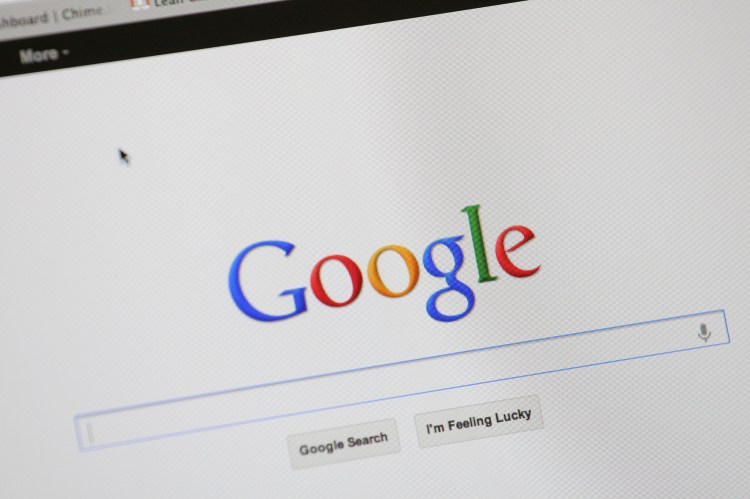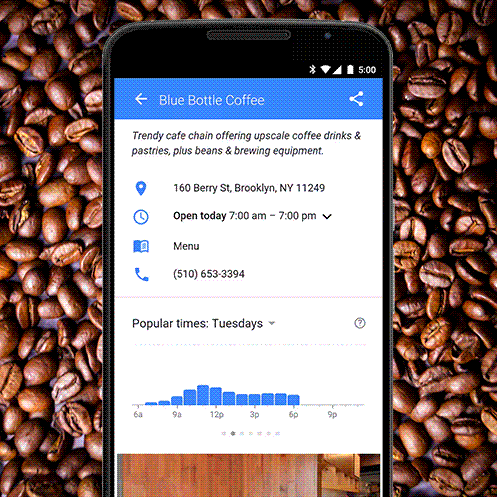Google search today gained a brilliant new feature that has the potential to save you a lot of time. You can now see “popular times” (read: the busiest, most crowded, and most annoying intervals) for each day of the week when you look up a location.
In other words, it’s possible to avoid lineups and general overload at “millions of places and businesses around the world” just by googling wherever you want to go. For some locations, it’s obvious (going to the gym on Mondays and Tuesdays is always horrible) but in other cases, you might end up wondering when exactly you should leave work to get lunch, grab coffee, or go shopping.
Google offers an example. If you search for “Blue Bottle Williamsburg” and tap on the title, you’ll see how busy the cafe gets throughout the day:
This feature has the potential to be very useful. Keep in mind though, this is Google we’re talking about: The app may end up skewing the numbers.
If too many people start showing up at the least busy times, well, those will become the busiest times. We presume Google is hoping that won’t happen, and that people will instead start going to places at times spread out during the week, which would benefit consumers and businesses alike.
We’re not sure where exactly Google is getting this data from, but we presume it is from location tracking in Google Maps on Android and iOS devices. While there are millions of Google Maps for mobile users in the world, not all of them use the app extensively.
In short, there are many reasons why “popular times” won’t give you the most accurate results, so don’t lean on it too much. That said, if you need to make a decision between two different days and times, it could be exactly what you need to tip the scales.
We’ve asked Google for more information about how this feature works and will update you if we hear back.
Update: Google pointed us to a blog post from August 2009 that details how the company gets its traffic data. This is the same technology:
When you choose to enable Google Maps with My Location, your phone sends anonymous bits of data back to Google describing how fast you’re moving. When we combine your speed with the speed of other phones on the road, across thousands of phones moving around a city at any given time, we can get a pretty good picture of live traffic conditions. We continuously combine this data and send it back to you for free in the Google Maps traffic layers.
In short, much like how Google computes traffic data using the anonymized aggregated movement of people on the road, the company is able to determine how busy a place is in the same way. Notice that there are no exact numbers provided: In both cases, the company just shows you what times and roads are busiest relative to other times and roads.



